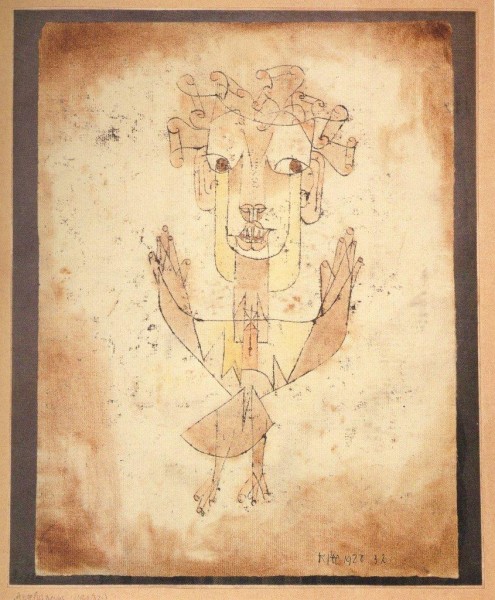Angelus Novus & Poor Angel
 |
| Paul Klee, 1920.
India ink, colored
chalk, and brown wash on paper, 318 x 242 mm Curator's notes, Israel Museum:
"Paul Klee's
singular drawing Angelus Novus,
with its evocation of mystical realms, has a history that echoes the
philosophical and political turbulence of its time. It was created during a
breakthrough year in Klee's career: in 1920 he had his first large-scale
exhibition in |
|
"A Klee painting named Angelus Novus shows an angel looking as though he is about to move away from something he is fixedly contemplating. His eyes are staring, his mouth is open, his wings are spread. This is how one pictures the angel of history. His face is turned toward the past. Where we perceive a chain of events, he sees one single catastrophe which keeps piling wreckage upon wreckage and hurls it in front of his feet. The angel would like to stay, awaken the dead, and make whole what has been smashed. But a storm is blowing from Paradise; it has got caught in his wings with such violence that the angel can no longer close them. The storm irresistibly propels him into the future to which his back is turned, while the pile of debris before him grows skyward. This storm is what we call progress." -Walter Benjamin
For Walter Benjamin, a German Jewish literary critic and philosopher, the notion of historical progress was an illusion. Arrested in Spain in 1940 trying to escape across the Pyrenees from France, he committed suicide.
|
